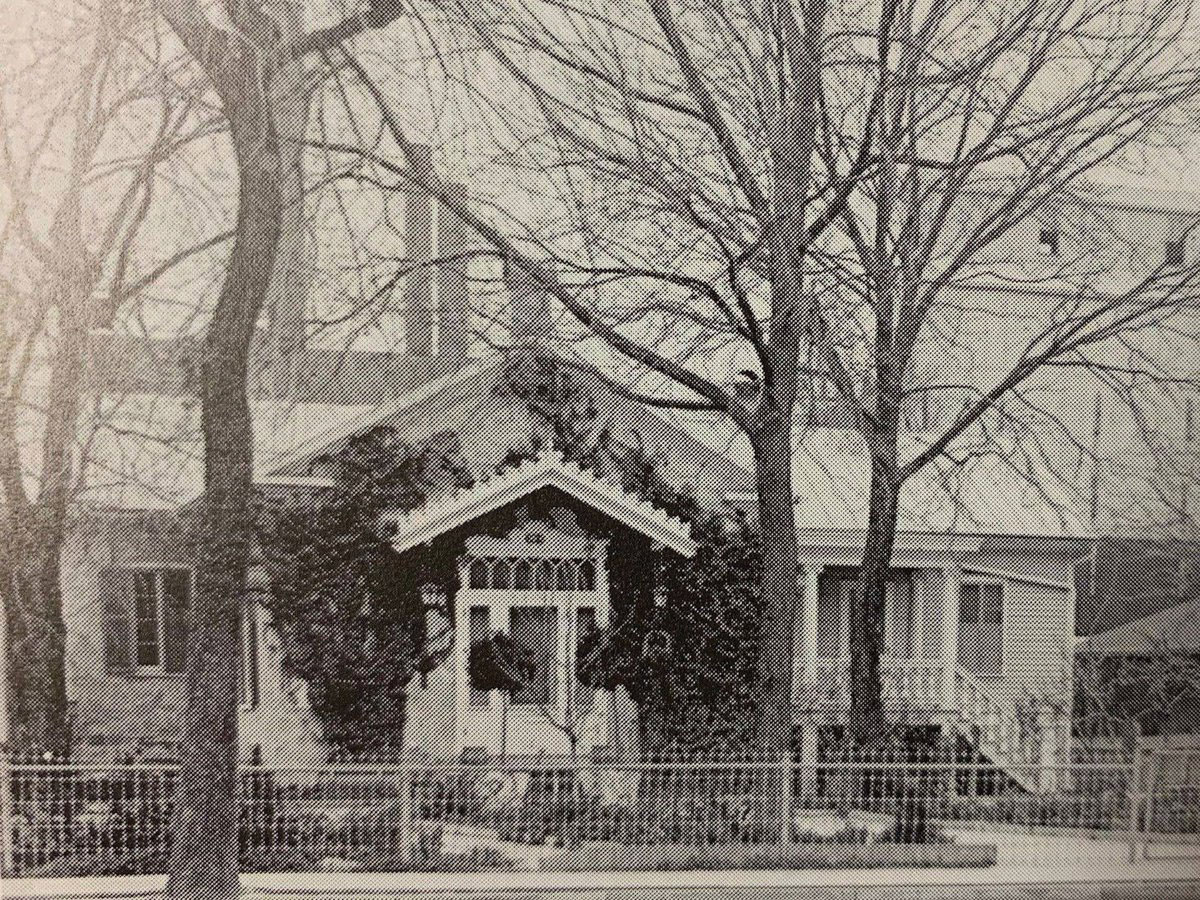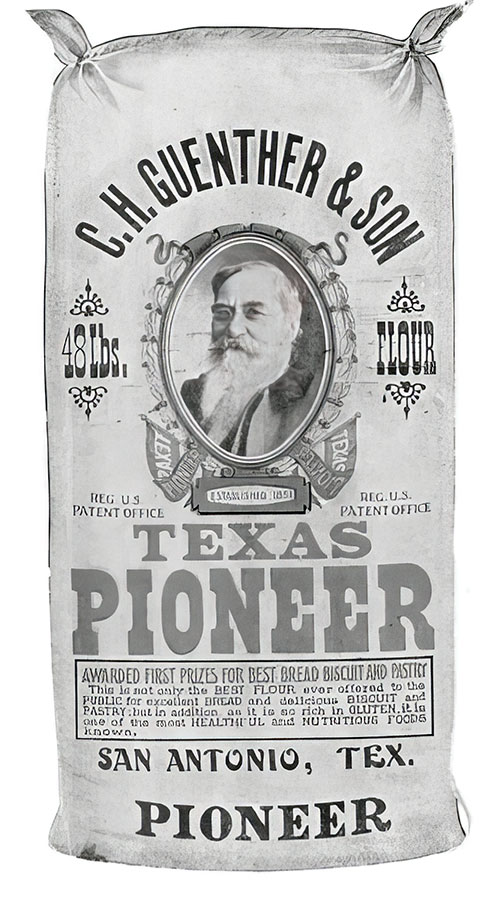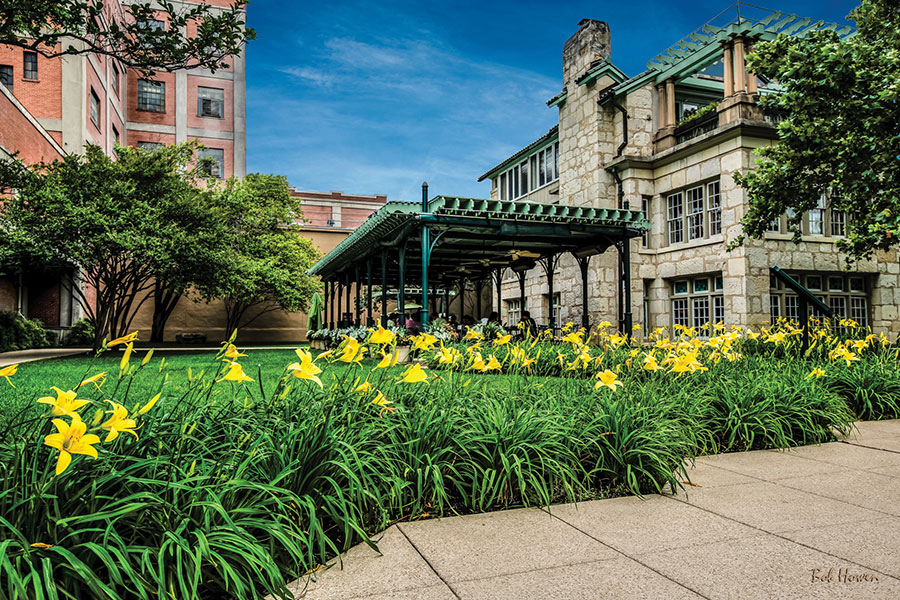The Rise & History of San Antonio’s C. H. Guenther & Son Food Empire – from Gravy to Breads.
“Texas is now the place where you can make money.”
So wrote ambitious, 24-year-old millwright Charles Hilmar Guenther to his parents back in Germany in 1851 after he emigrated to America three years earlier. He found living in early Texas not to be as pleasant as living in Germany, but his determination and knowhow launched a company that today ranks as one of the world’s largest purveyors of food products, including the iconic Pioneer and White Wings flour brands.
Guenther’s decision to practice his trade in Texas stemmed from a shortage of millers in the state. He set up his first water-powered mill to grind grain into flour at the juncture of Live Oak Creek and the Pedernales River just outside Fredericksburg. But a drought in 1856 stunted growth of grain crops and reduced the flow of water necessary to power the mill.
Declaring that “with me, milling is the main thing,” Guenther moved farther south to San Antonio, where “only one meager water mill” existed. His new mill on the swifter-flowing San Antonio River a mile south of downtown opened in 1860 and filled what he called “a real need for a good mill.”
It was Guenther’s entrepreneurial spirit that led to creation of the oldest family-owned business in Texas and one of the oldest continuously-operated, family-owned milling companies in the U. S. True to the name of his brand, Guenther not only pioneered as a Texas miller but soon flourished as a successful Texas businessman.

His company, C. H. Guenther & Son, began with the production of flour and grew to offer a vast array of food products, says Svetlana Markova, senior brand manager.
“Today Pioneer competes with global brands in various categories,” she explains. “It’s the number 2 branded gravy in the country and the number 1 white gravy platform consisting of country, sausage, peppered, biscuit and smoky bacon gravies. Other very popular gravies include brown and roasted turkey, and there are a variety of seasonings and easy-to-make baking and pancake mixes. White Wings is well-known for its flour and tortilla mixes that have been enjoyed by generations.”
In Markova’s view, what sets Pioneer and White Wings apart is product quality that hasn’t changed over the years.
“This is something we take very seriously,” she says. “Family members from different generations often say to us that ‘this is the taste I remember when my mother or grandmother made it.’ Such feedback speaks to the commitment the company has made to product quality and positive consumer experience year after year.”

What began in Fredericksburg and San Antonio now touches other Texas locales. C. H. Guenther & Son employs 700 Texans in five plants – San Antonio (dry mixes, wheat and corn milling); Bryan (fresh buns and muffins); Dallas (frozen dough); Duncanville (frozen dough); and Denton (dry mixes, wheat and corn milling).
Texas farms also grow some of the grain the company requires for its products. “We’re not exclusively Texas-supplied because the weather doesn’t permit Texas to meet all our needs,” says James Schick, vice president of purchasing, “but about one-third of our supply comes from Uvalde and Medina.”
Grain from Texas and elsewhere arrives at a San Antonio landmark that once held the distinction of being the city’s tallest structure – a square, castle-like, 20-story grain elevator made of concrete and emblazoned with Pioneer and White Wings in huge lettering. It opened in 1922 as part of a major mill expansion, and it continues to function in the production process. It also stands as a highly visible and convenient icon that both day and night helps wayward motorists and pedestrians regain their bearings.
Upon arrival at the elevator, grain goes to various bins in the tower for cleaning, blending and eventual transfer to the milling unit for grinding into flour and packaging for distribution.
Down below at ground level, visitors enjoy breakfast or lunch at The Guenther House restaurant, many of them oblivious to the manufacturing process taking place next door. The stately, two-story structure that now houses the restaurant was built in 1860 as a spacious dwelling for the growing Guenther family. The builders used local materials including limestone quarried from a site that ultimately became the city’s Brackenridge Park on the San Antonio River north of downtown. Mortar used to cement the stone blocks contained sand mixed with horsehair.

Guenther’s youngest son, Erhard, became president of Pioneer Flour Mills in 1902 and undertook a major remodeling of the family home that made The Guenther House appear much as it does today. In addition to the restaurant, the former family homestead now includes a museum, originally the library, as well as The San Antonio River Mill Store and The Roof Garden.
Historical treasures on display at the museum include antique baking accessories, cookie cutters, mill memorabilia and a 1917 Pioneer Flour Mills pay ledger, while the store showcases cookware and Guenther’s Gourmet Baking Collection, also known as The San Antonio River Mill Brand that includes waffle, pancake, biscuit and gravy mixes as well as preserves, honey, sauces and Founder’s Choice coffee that’s served in the restaurant. The bright and airy Roof Garden on the upper floor of The Guenther House, once the site of dances, now hosts a variety of meetings and catered special events.
Donna Vaughan, who joined The Guenther House staff as a server six months after the restaurant opened in March 1988, manages multiple functions as director of hospitality, programs, corporate facilities and The Guenther House.
“I still enjoy listening to folks reminisce about the mill and the beautiful King William neighborhood where The Guenther House is located,” she says. “Now and then, guests will bring in pieces of china – Pioneer anniversary plates that were given to customers beginning in 1909. The last of those plates was distributed in 2001 as part of the year-long celebration of our company’s 150th anniversary.”
Each year more than 200,000 guests from around the world dine at The Guenther House amid its vintage décor that includes stained-glass window panels, ceramic tile flooring, solid-copper light fixtures and decorative touches like plaster bundles of corn and wheat that pay tribute to the miller’s trade. Among the notable guests Vaughan remembers are Irish actor Pierce Brosnan, actress Barbara Eden of “I Dream of Jeannie” TV sitcom fame and more recently stars of the San Antonio Spurs NBA basketball team.

Diners feast on Southern sweet cream waffles, Pioneer buttermilk biscuits and sausage country gravy, freshly-baked cinnamon rolls and White Wings champagne chicken enchiladas, to name just a few popular menu items. Vaughan, who’s also involved in developing new recipes using Pioneer and White Wings products, says light and fluffy cinnamon struesel coffee cake, with Pioneer Biscuit and Baking Mix as the key ingredient, is the most-requested recipe.
“The number one focus when developing new recipes is to offer easy-to-make, flavorful dishes,” she says. “We look to a simple prep process, avoiding too many ingredients that overcomplicate things but, at the same time, produce a final result that our consumers are happy with. We look to flavor trends as well as anything else that may be relevant to the usage of our products to provide consumers with versatility of use.”
Versatile Vaughan not only spends considerable time supervising operations at The Guenther House but also works in the C. H. Guenther & Son corporate headquarters adjacent to Brackenridge Park. The company – under family ownership until 2018 and now owned by Pritzker Private Capital – acquired the old ButterKrust bakery in 2005, remodeled it and occupied the new office space in 2012 to keep pace with rapid growth.
The company’s global growth that has occurred over more than a century is the product of determination and a pioneering spirit that led a talented young German millwright to Texas where he established one of the world’s largest and most successful milling companies, a veritable “flour power.”
Don't Miss
Visit San Antonio
visitsanantonio.com
The Guenther House
205 E. Guenther St.
San Antonio, TX 78204
(210) 227-1061
guentherhouse.com
To Learn More About Pioneer
Read C. H. Guenther & Son at 150 Years: The Legacy of a Texas Milling Pioneer by Lewis F. Fisher, published in 2001 by Maverick Publishing Co. of San Antonio.
Try Pioneer’s Most-Requested Recipe
Cinnamon Struesel Cake








